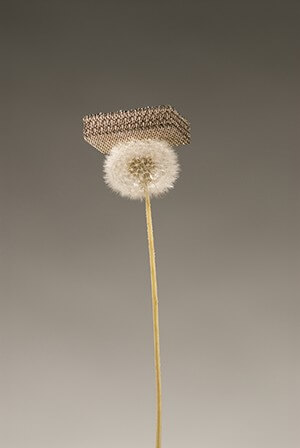Researchers at HRL Laboratories, LLC, announced today they have developed the world’s lightest material with a density of 0.9 mg/cc, approximately one hundred times lighter than Styrofoam™. The results of their research―a collaborative effort between HRL, The California Institute of Technology and the University of California, Irvine―are published in the November 18 issue of Science.
This new material redefines the limits of lightweight materials because of its unique “micro-lattice” cellular architecture. Using an innovative fabrication process developed by HRL senior scientist Dr. Alan Jacobsen, the team was able to make a material that consists of 99.99% open volume by designing the 0.01% solid at the nanometer, micron and millimeter scales. “The trick is to fabricate a lattice of interconnected hollow tubes with a wall thickness of 100 nanometers, 1,000 times thinner than a human hair,” said lead author Dr. Tobias Schaedler.
In addition to its ultra-low density, the material’s cellular architecture gives rise to unprecedented mechanical behavior for a metal, including complete recovery from compression exceeding 50% strain and extraordinarily high energy absorption. Developed for the Defense Advanced Research Projects Agency (DARPA), the novel material could be used for battery electrodes, catalyst supports, and acoustic, vibration or shock energy damping.
Dr. Bill Carter, manager of the Architected Materials Group at HRL, lays out the vision for these micro-lattice materials by drawing parallels to large structures: “Modern buildings, exemplified by the Eiffel Tower or the Golden Gate Bridge, are incredibly light and weight-efficient by virtue of their architectures. We are revolutionizing lightweight materials by bringing this concept to the materials level and designing their architectures at the nano and micro scales.”
If our reporting has informed or inspired you, please consider making a donation. Every contribution, no matter the size, empowers us to continue delivering accurate, engaging, and trustworthy science and medical news. Independent journalism requires time, effort, and resources—your support ensures we can keep uncovering the stories that matter most to you.
Join us in making knowledge accessible and impactful. Thank you for standing with us!

